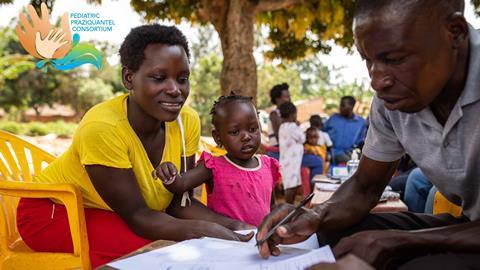For (young) children, swallowing large pills or capsules is difficult or even impossible. This hampers the treatment of diseases such as Schistosomiasis. The Pediatric Praziquantel Consortium succeeded in developing a modified version of an existing Schistosomiasis drug that is also suitable for young children. The first children have now been treated in Uganda.
Schistosomiasis is a parasitic disease caused by worms, which are particularly prevalent in still freshwater in tropical regions. It is one of the 21 neglected tropical diseases (NTDs), as defined by the World Health Organisation (WHO). Infection with the Schistosoma worms leads to malnutrition, anaemia, growth problems and cognitive impairment. In some extreme cases, it can lead to chronic organ failure or even death.
For some time now, an effective and cheap drug, Praziquantel, has been on the market, but it was only available as a large and literally bitter pill. This makes it unsuitable for young children aged between 3 months and 6 years. While it is precisely in this group that Schistosomiasis is a major problem.
Dissolving tablet
The Pediatric Praziquantel Consortium, an alliance of international pharmaceutical companies and research groups coordinated by Dutch project agency Lygature, has now designed a new version of Praziquantel, called Arpraziquantel. This still has the same dose of active ingredient, 150 mg, but now in the form of a small dissolving tablet. These changes make the drug more suitable for use in young children. Arpraziquantel is also stable in hot and humid climates, an important feature considering the climate in countries where Schistosomiasis is a major problem.
Meanwhile, in Uganda, the first child has been treated with Arpraziquantel. The results of the treatment are being closely monitored with the hope that the treatment can be used in more children.













Nog geen opmerkingen